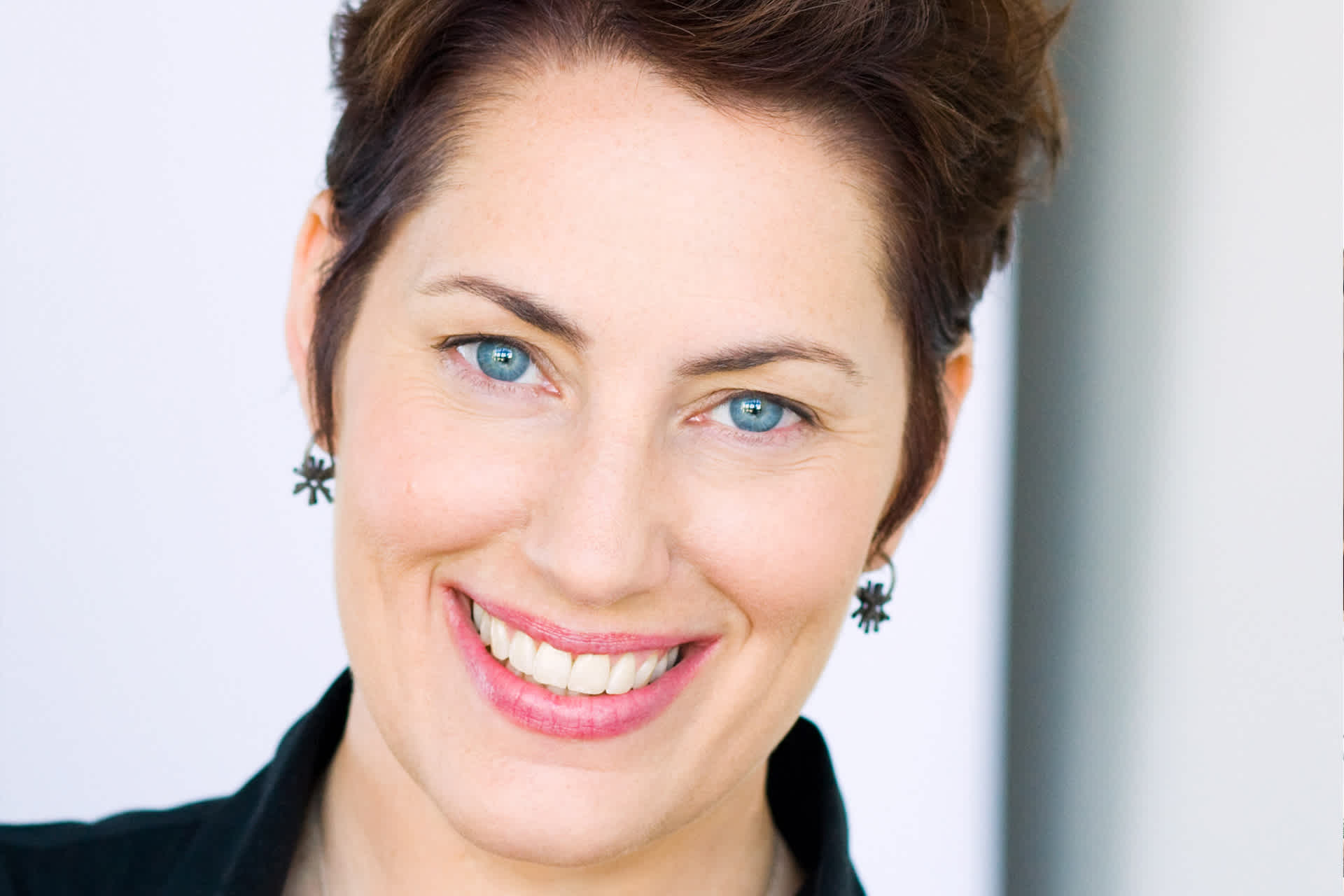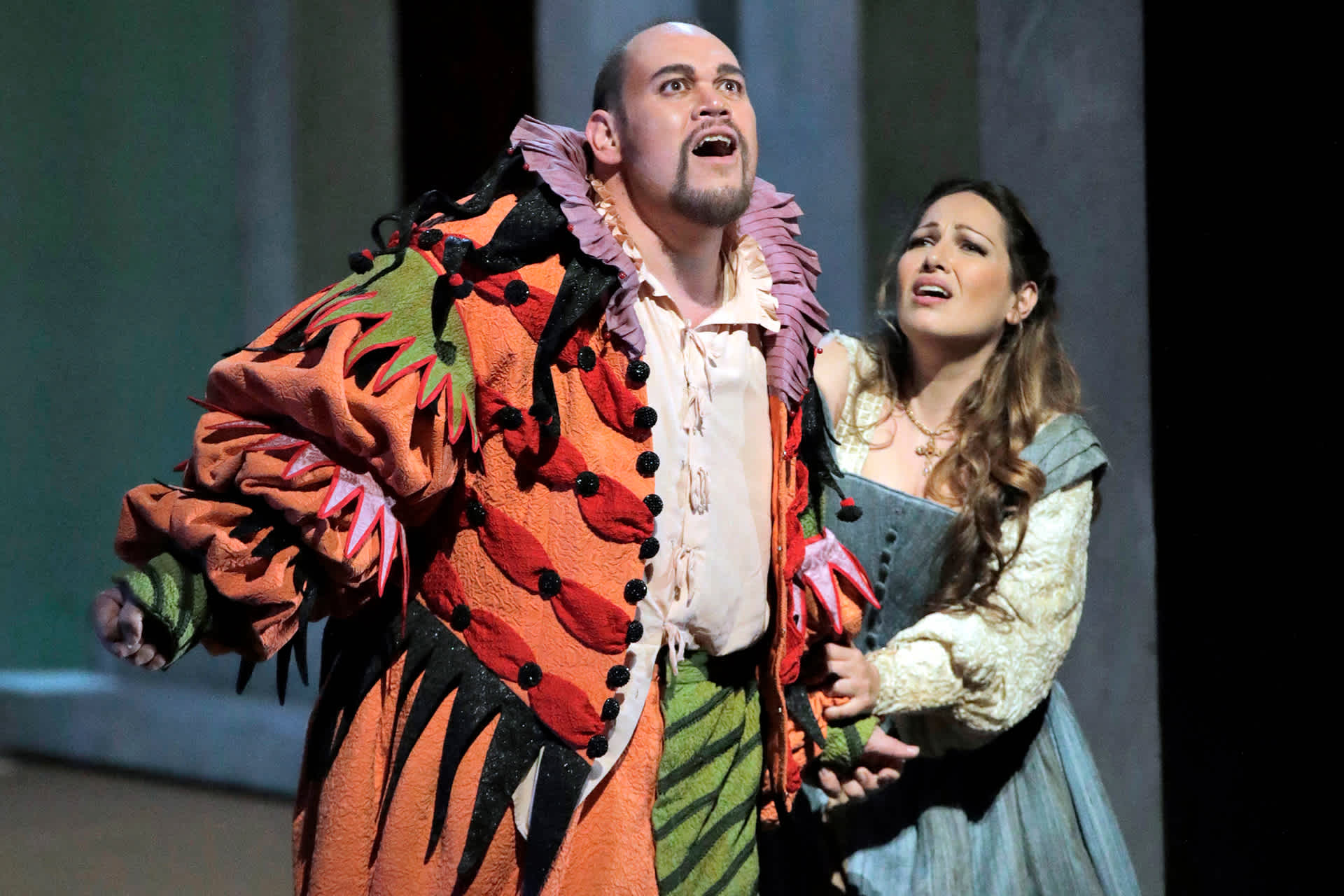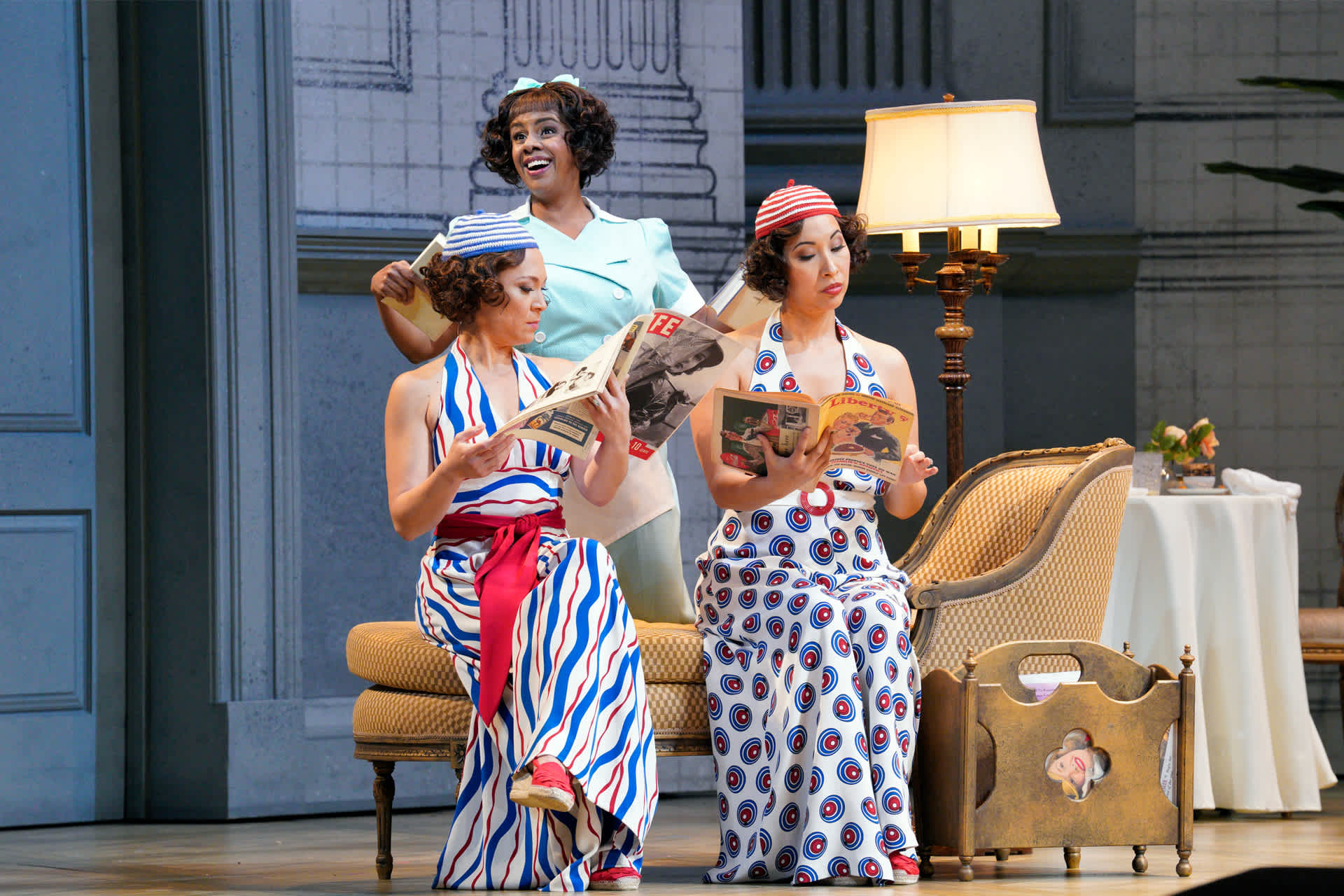Real Talk with Constance Hoffman

Constance Hoffman has most recently designed costumes for operas at the San Francisco Opera, in California, and the Opera Theatre Saint Louis, in Missouri. She teaches at New York University.
How did you discover costume design?
I started out as an actor. I took theater classes in high school, in Oakland, California. I was actually much more interested in clothes. I was learning how to make my own clothes. But I wasn’t thinking about careers at 16. I was just pursuing what I was interested in doing. I was also playing the flute seriously.
I thought I wanted to be an actor, so I focused on that when I went to college at the University of California, Davis. I was very committed to theater and storytelling through theater, and that interest hadn’t waned. But about halfway through college, I was talking to a director, and was asked if I would design costumes for a small student show. We were talking about how to tell the story. A lightbulb went off. Those were the conversations that were the most interesting to me. I gradually started shifting my focus toward costume design.
Did you teach yourself design?
I started taking design classes, and worked in San Francisco for a couple of years as a receptionist at a law firm to save money while I went through the application process for graduate school at New York University (NYU). That took about a year of focused work, during which I developed a portfolio.
Costume designers do a lot of drawing. Did you already know how to draw?
I didn't have any training, and I wasn’t confident in my skill. So I started to take figure drawing classes. I regard drawing as a tool for exploration and understanding, not presentation, necessarily. The focus isn’t on whether or not it’s a good drawing. It’s whether it’s a clear drawing. It’s essential that I can draw, but drawing is mainly a tool.
What were some of your first professional jobs?
My first professional jobs were small. Then they started to grow with the relationships I was forging with the established designers and directors I was working with. My jobs as an assistant started right away with opera. I was an assistant for John Conklin at the Santa Fe Opera for two summers. Conklin had been a teacher of mine at NYU. He’s a set designer and costume designer. He was working on a show in Paris at the time, where there was a strike at the Paris Opera. He couldn’t leave. So I ended up having a lot of responsibility on that show in Santa Fe. It built a real confidence in what I was doing. And that helped me become a designer, and have confidence working with people in big theaters with big projects.
Then John introduced me to director Julie Taymor, who was looking for an assistant for a production of The Magic Flute, in Florence, Italy. That was my first project in Europe. I became a designer in my own right. My big break, as they say, was a production of Paul Bunyan. That was at the Glimmerglass Festival, in Cooperstown, New York. That was a big step into my professional life. I started to do projects and make a living on a level where I didn’t have to have a second job as an assistant. I could start to make my living full-time as a designer. I think this is true of any kind of theater career. Once you get established in one community, and are trusted and build relationships, you tend to be referred to other people in that community.
How did you find your way to the San Francisco Opera?
I’ve come and gone from the San Francisco Opera over the years, with various directors who have been invited to work there. Director Mark Lamos invited me to do a production of Rigoletto in San Francisco many years ago. That was my first time going back to San Francisco. Years went by, and then I worked with Kevin Newbury on The Gospel of Mary Magdalene. And over the past few years I did the Mozart–Da Ponte operas: The Marriage of Figaro, Così fan tutte, and Don Giovanni. And most recently, I did Antony and Cleopatra.

How do you come up with the ideas for costumes?
It’s a collaborative conversation with the director and with the rest of the team. But I have to start somewhere for myself, just reading and listening and kind of tuning in to how I’m responding to this work at this moment in my life. I do a lot of research about it: who wrote it, who played in it, what was going on in their world when it was written. I don’t do research so that I can faithfully set the piece in the period in which it was written. I do it so that I understand its social importance, and what it meant to the writer. It’s my way of contacting a playwright. How do I contact Shakespeare and understand what was going on in his world?
Once you come up with a concept for the costumes, and you’ve drawn them, what happens next? Do you make the costumes?
I’m not making them. That’s too much for me to do. I’m guiding that process, though. I work with a team of people who make the clothes. I’m working in New York right now, with the Park Avenue Armory, on a piece called Doppelganger. It has a big cast. In New York City, very few theaters have full-service shops. So I have to figure out how we’re going to get all this done. The Park Avenue Armory has one person who is their in-house wardrobe head, who is quite organized. We’re working together. I’ve got drawings. Now we’re looking at the budget, and we’ve sent everything out to costume shops. They send back bids, we look at the budget, we make adjustments. Then we award a bid to a costume shop. We buy the fabric and get it to them. It’s a little bit like planning a giant expedition to the North Pole.
On the other hand, the San Francisco Opera has a wonderful costume shop that works year-round. I bring in the drawings and the research and any materials, and we have a meeting. They figure out the workflow. They provide me with an assistant who’s on staff.

Do you work on several projects at once?
That’s the way it happens. I just opened a production of The Flying Dutchman in Santa Fe. But while I was there, I was dealing with the Doppelganger project for the Park Avenue Armory, which opens in September 2023. And I’ve been having meetings for a production of Handel’s Julius Caesar, which opens next summer in St. Louis, Missouri. And I’m doing some organizational work toward a remount of Antony and Cleopatra, which premiered in San Francisco and is now going to Barcelona, Spain. So I’m always juggling a few things at once.
What do you love most about your job?
I love that it’s always changing. I’m always meeting new people and embarking on new stories. I love encountering a piece for the first time, as much as I love reencountering a piece for the third time. Every project is an opportunity to see where I am now in my response to text and music. I love that there’s always a sense of discovery, even if I’m doing a production for the third time. It’s always new, and it allows me to keep learning.

